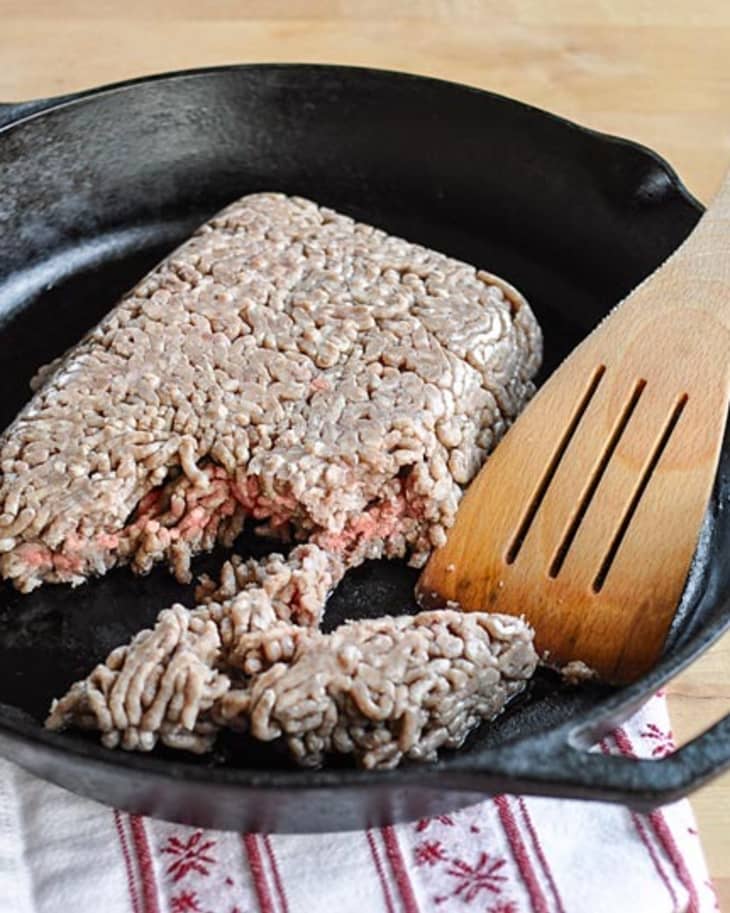Meat turns grey in the freezer due to a lack of oxygen and the formation of metmyoglobin. This process occurs when myoglobin, a protein in meat, oxidizes.
Freezing meat is a common practice to preserve freshness and extend shelf life. However, many people notice a color change when meat is stored for extended periods. This change can be concerning, but it does not necessarily indicate spoilage. The grey color is primarily a result of oxidation, which affects the meat’s appearance but not its safety or taste.
Proper packaging methods can help minimize this discoloration. Understanding why meat changes color in the freezer can help consumers maintain the quality and appeal of their frozen foods.
The Science Of Meat Coloration
The color of meat changes due to pigments. Fresh meat appears red because of myoglobin. Myoglobin holds oxygen and gives meat its color. When meat freezes, myoglobin can turn grey. This change happens due to a lack of oxygen in the freezer.
Chemical reactions also play a role. The freezing process can damage cells. This damage affects how light interacts with the meat. As a result, the meat looks dull or grey. The meat is still safe to eat even if it looks different.
| Meat Color | Reason for Change |
|---|---|
| Fresh Red | Myoglobin presence |
| Frozen Grey | Loss of oxygen |

Credit: www.reddit.com
Factors Contributing To Meat Discoloration
Temperature fluctuations cause meat to lose its bright color. Rapid changes make meat turn grey. This often happens during power outages or when the freezer door is opened too often.
Freezer burn occurs when meat is not wrapped properly. It leads to dehydration and discoloration. The surface of the meat may become dry and grey. This does not mean the meat is bad, but it can affect the taste.
Always keep the freezer at a constant temperature. This helps maintain the meat’s color and quality. Properly wrapping meat can also prevent freezer burn and keep it looking fresh.
How Freezing Alters Meat Texture And Color
Freezing meat can change its color and texture. Ice crystals form inside the meat during freezing. These crystals can damage the muscle fibers, leading to a tougher texture. When meat thaws, it may not return to its original state.
The presence of oxygen also plays a role. Meat exposed to air can turn gray due to oxidation. This process affects the myoglobin in the meat, changing its color. Proper packaging can help reduce this exposure.
| Factor | Effect on Meat |
|---|---|
| Ice Crystals | Damage muscle fibers and change texture |
| Oxygen | Causes meat to turn gray |
Credit: www.quora.com
Is Grey Meat Safe To Eat?
Grey meat often appears due to oxidation. This does not always mean it is spoiled. Freezing meat changes its color but keeps it safe. Look for other signs of spoilage. A bad smell or slimy texture indicates problems.
Discolored meat can still be nutritious. Freezing preserves most nutrients. Always check the packaging for any tears. A proper seal helps maintain quality. If meat has freezer burn, it may lose taste but is safe to eat.
| Signs of Spoilage | Freezer Effects |
|---|---|
| Bad odor | Color change (grey or brown) |
| Slimy texture | Ice crystals on surface |
| Unusual flavor | No harmful bacteria |
Preventing Meat Discoloration In The Freezer
To keep meat from turning grey in the freezer, use proper packaging. Wrap meat tightly in plastic wrap, foil, or freezer paper. This helps prevent air exposure, which causes discoloration.
Use a vacuum sealer for the best results. It removes all air and locks in freshness. Label packages with the date to track how long they’ve been frozen.
Store meat at 0°F (-18°C) or lower. This temperature slows down the growth of bacteria. Avoid frequent opening of the freezer, as this raises the temperature.
| Tip | Details |
|---|---|
| Proper Packaging | Use plastic wrap, foil, or freezer paper. |
| Vacuum Sealing | Removes air and locks in freshness. |
| Freezer Temperature | Keep at 0°F (-18°C) or lower. |

Credit: www.thekitchn.com
The Impact Of Freezing Duration On Meat Quality
Freezing meat can affect its quality. Short-term freezing keeps meat fresher. Meat stored for a few weeks stays red and flavorful. Long-term freezing can change meat’s color to grey. This happens due to loss of moisture and oxidation.
Different types of meat need different freezing methods. For beef, wrap it tightly in plastic. This prevents air from entering. For poultry, use freezer bags to keep it fresh. Fish should be frozen quickly to maintain taste and texture.
| Type of Meat | Best Practice |
|---|---|
| Beef | Wrap tightly in plastic |
| Poultry | Use freezer bags |
| Fish | Freeze quickly |
Thawing Meat: Best Methods To Retain Quality
Thawing meat properly is very important for keeping its quality. Safe thawing techniques include using the refrigerator, cold water, or the microwave. The refrigerator method is the best. It keeps meat at a safe temperature while it thaws.
Cold water can be used but must be changed every 30 minutes. This method is faster than the refrigerator but needs careful monitoring. The microwave method is quick but may cook edges of the meat.
To restore color and texture after freezing, cook meat properly. Cooking brings back the juicy flavor. Avoid refreezing thawed meat, as it can affect quality.
The Role Of Myoglobin In Meat Color Changes
Myoglobin is a protein found in muscle tissues. It helps store oxygen and gives meat its red color. Fresh meat is usually bright red because of myoglobin’s oxygen content. When meat is exposed to air, myoglobin reacts and changes color.
Freezing affects myoglobin by altering its structure. The temperature drop can cause myoglobin to lose its color. Meat often turns grey due to this change. Lack of oxygen during freezing also contributes to this color shift. Grey meat is not spoiled; it is a natural reaction.
To keep meat looking fresh, wrap it tightly. Preventing air exposure helps maintain its color. Using vacuum-sealed bags can also be beneficial. This method limits contact with air and keeps myoglobin stable.
Frequently Asked Questions
Why Is My Meat Grey After Freezing?
Meat turns grey after freezing due to lack of oxygen. This color change doesn’t mean it’s spoiled. Freezing slows down bacterial growth, preserving freshness. Proper packaging can minimize this effect. Always check for off smells or textures to ensure quality before cooking.
Is Meat Still Good If It Turns Grey?
Meat can still be safe to eat if it turns grey. This discoloration often results from oxidation, not spoilage. Always check for other signs of spoilage, like a foul smell or slimy texture. If those are absent, the meat is likely still good.
How To Know If Meat Is Bad From The Freezer?
Check for off odors, discoloration, or a slimy texture. Frost or ice crystals on the meat can indicate freezer burn. If the meat has been stored longer than recommended (typically 6-12 months), it’s safer to discard it. Always trust your senses when assessing meat quality.
What Causes Gray Meat?
Gray meat is often caused by oxidation, which occurs when meat is exposed to air. Bacterial growth can also contribute to discoloration. Improper storage or aging can lead to changes in color as well. Always check for freshness to ensure quality.
Conclusion
Meat turning grey in the freezer is a common concern. This discoloration often results from oxidation and freezer burn. While it may look unappealing, it doesn’t necessarily mean the meat is spoiled. Understanding these changes can help you maintain your meat quality and make informed choices for your meals.
